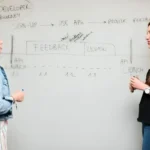Key Takeaways:
- Understanding the fundamentals of 3D event diagramming.
- Exploring the benefits of utilizing dynamic diagrams in event planning.
- Learning about the latest technologies and tools for creating effective event layouts.
- Gaining insights into the role of 3D modeling in enhancing attendee experiences.
The Fundamentals of 3D Event Diagramming
Delving into event planning with a three-dimensional perspective heralds a new era of creativity and accuracy. 3D event diagramming allows planners to meticulously plan every aspect of an event, from the stage design to the egress paths for guests. With innovative event diagramming software, every element can be placed within a virtual environment, providing a fully realized concept of the event before anything is physically constructed. This virtual representation isn’t just a layout; it’s an interactive blueprint that can be manipulated and explored, mirroring the physical world with incredible precision. Such software has become the bedrock upon which successful event management rests, replacing rudimentary sketches with comprehensive models that convey the depth and scale of an event space.
In essence, 3D event diagramming revolutionizes the planning process by offering planners a holistic view of their event spaces. By leveraging this technology, planners can anticipate potential logistical challenges, optimize space utilization, and ensure a seamless flow of guests throughout the event. Moreover, 3D event diagrams are invaluable communication tools, allowing planners to convey their vision clearly to clients, vendors, and other stakeholders. This level of detail and accuracy minimizes the margin for error, resulting in smoother execution and enhanced attendee experiences. Ultimately, 3D event diagramming sets a new standard for precision and efficiency in event planning, empowering planners to bring their creative visions to life with unparalleled clarity and confidence.
Benefits of Dynamic Diagrams in Event Planning
Dynamic 3D diagrams are an event planner’s best friend. They render an accurate, navigable model of an event that can effectively convey the spatial dynamics to clients, sponsors, and team members. This virtual representation is invaluable in the planning process, as it allows for quick adaptations and options to explore different setups without the cost of physical mock-ups. Such depth of planning aids in pre-empting potential issues, leading to events that are not only well-executed but also carry reduced risk and increased safety. The agility that comes with 3D diagrams saves countless hours—time that can now be invested in refining the guest experience and other creative endeavors.
Dynamic 3D diagrams offer a level of detail and interactivity that traditional diagrams cannot match. Planners can easily manipulate elements within the diagram to experiment with different layouts, seating arrangements, and decor options. This flexibility facilitates collaborative decision-making, allowing stakeholders to visualize and provide real-time feedback on the event design. Additionally, dynamic diagrams enhance communication by providing an apparent visual reference that ensures everyone involved is on the same page regarding the event layout and logistics. Dynamic 3D diagrams contribute to event planning efforts’ overall success and efficiency by streamlining the planning process and fostering effective communication.
Revolutionary Technologies in Event Diagramming
As event planning enters the digital age, virtual reality (VR) and augmented reality (AR) have become game-changers. VR transports clients into the heart of their prospective event, allowing them a 360-degree view of what’s to come. Likewise, AR takes advantage of the physical venue, overlaying the 3D diagrams over the actual space, offering a unique juxtaposition of the real and the planned. Fusing these technologies with event diagramming software creates startlingly immersive experiences and is immeasurably valuable in planning.
3D Modeling: A Game-Changer for Attendee Experience
The impact of 3D modeling extends well beyond the planning phase—into the very experience of the attendees. By leveraging detailed previews and spatial analysis, event professionals can choreograph the event narrative, guide the attendees’ journey, and highlight areas of interest. This deliberate approach can generate excitement and ensure that each aspect of the event, from keynote speeches to networking sessions, is optimally located and accessible. The result is an event that feels intuitive and enriching, creating memories that resonate with attendees long after the event.
Top Tools and Software for Dynamic Event Diagramming
Selecting the premier software for 3D diagramming is a decision that requires careful consideration. Various platforms offer many features: some focus on ease of use and a user-friendly interface, while others pride themselves on their extensive catalog of furniture and fixtures. What’s paramount is choosing software that aligns with the event’s needs and the team’s skillset. The event planning industry constantly adapts new technologies to evolve with the increasingly digital and virtual landscape, ensuring that the chosen tools stay ahead of the curve and continue providing exceptional design capabilities.
Best Practices in 3D Event Planning
Practicing the art of 3D event planning requires discipline and adherence to industry best practices. It starts with an intimate understanding of the tangible limits of space and the intangible dynamics of human interaction within it. Collaboration is critical, as 3D planning is not a solitary endeavor but a symphony of input from various stakeholders. Regular updates to the model, transparency, and communication pave the way for a successful event and are emblematic of the harmonious blend of function and form. Attention to these details fosters an environment where creativity thrives and events leave lasting impressions.
Conclusion
Mastering dynamic 3D diagramming techniques in creative event planning marks a significant leap forward in innovation and efficiency. By leveraging advanced visualization tools, event planners can transform abstract concepts into tangible, immersive experiences, allowing clients to comprehend and engage with their vision fully. The dynamic nature of 3D diagramming enables real-time adjustments and experimentation, empowering planners to fine-tune every aspect of the event layout until it perfectly aligns with the client’s objectives and preferences. Moreover, integrating interactive elements and simulating different scenarios enhances collaboration and decision-making, resulting in more cohesive and impactful events. As the events industry continues to evolve, mastering dynamic 3D diagramming techniques will be essential for staying ahead of the curve, delighting clients, and delivering unforgettable experiences that resonate long after the event has ended.







